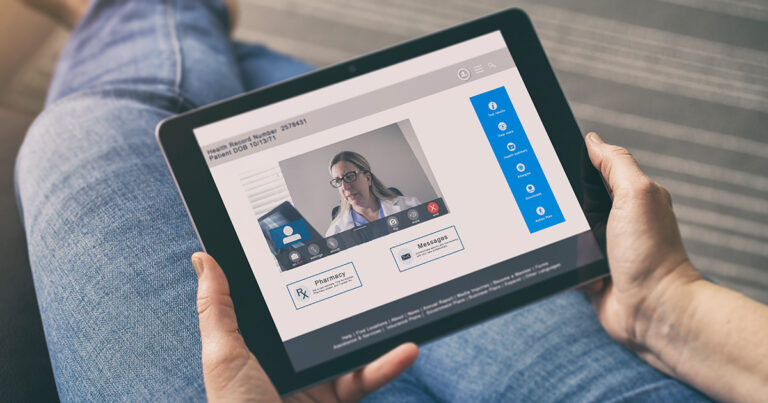How to Stop the Spread of Germs in Your Waiting Room
(Cough, cough.)
(Sniffle, sniffle.)
(“Aaachoo!”)
Yep, we all know these unfortunate, familiar sounds. And they’re about to become a lot more common to our ears everywhere we go, especially public places—including in the waiting room of your practice.
Regardless if your office is one that specializes in treating those who are sick or not, sitting around a closed area with strangers is a sure way to share some icky germs.
However, there are some easy steps you can take to keep your patients (and your staff!) as protected and healthy as possible. Having an open dialogue with your staff and patients when they are scheduling appointments, and keeping your office sterilized are all important when it comes to achieving this.
So, let’s get to it.
Cold & Flu Season

Source: www.cdc.gov
Cold and flu season is upon us, and the Center for Disease Control and Prevention is urging people to get their flu vaccinations before the end of October. This is after a particularly severe (and deadly) 2017-2018 flu season, with CNBC reporting that more than 700,000 people were hospitalized.
The flu—along with other viruses—tends to peak in the colder winter months, though it’s not entirely clear as to why this happens.
When it comes to our own immune systems weakening, there are some theories as to why this occurs when the seasons change. Some say that cold, dry air allows germs to remain airborne longer. This can be combined with the idea that the weather outside keeps us cooped up indoors more often, giving us ample time to breathe in respiratory viruses.
Whatever the reasons behind it, it’s no secret that with the introduction of coats and scarves into our wardrobe sadly comes colds and shivers alongside it.
As a medical or wellness practice, you can’t avoid having people come in for appointments, and you also can’t place each and every patient in a bubble to ward off shared germs.
But you can make your office a less inhabitable place for the yucky stuff.
Here’s how:
Educate Your Patients
You would think that grown adults would be conscious of not sharing their germs with others, but you’d be surprised how quickly people forget their manners—especially when they are feeling crummy.
If you are an office that offers services outside of those seeking treatment for being sick, kindly ask that your patients reschedule appointments if they are ill.
This may sound risky (you don’t want them to seek out your competitor!), but we assure you that your patients will be heartened that you take such an interest in the health of all your patients and your staff. They would certainly appreciate you rescheduling someone with the flu when they’d be the ones otherwise sitting with them in your waiting room!
You should also be promoting a germ-free environment. Yes, that can mean putting up some signage! Encourage patients to wash their hands upon arrival, and have hand sanitizer and tissues placed frequently throughout the room.
Also, don’t forget to emphasize to them the importance of getting their flu shot. A quick email blast or social media post should help remind them (if the daily news, their places of work, or their kids’ schools haven’t hammered it home enough already).
Educate Your Staff
For all the reasons you wouldn’t want a sick patient infecting other patients in your office, you also wouldn’t want a member of your staff infecting your patients—or their coworkers.
We obviously don’t know the inner-workings of the benefits package offered to your staff, including vacation and sick days, but it’s important (especially during cold and flu season) to encourage your staff to stay home if they are sick.
You’ve likely employed a team of smart, hard-working people who wouldn’t take advantage of a policy like this, so creating one not only prevents the spread of germs but shows that you respect their desire to work and trust their integrity.
Though it’s rough to be short-handed if someone calls in sick, have a plan in place for instances like this that best works for you and your team.
Maybe there are measures you can have in place—such as blocking off time for emergency appointments, pushing off administrative duties, or calling in for backup. When all else fails? Bring in lunch and coffee (lots and lots of coffee), and hunker down together to accomplish the day’s tasks.
Cleanliness
This one goes without saying, but we’re going to say it anyway: Disinfecting your waiting room—as well as the other areas of your office—often and thoroughly is the only way to kill off the germs that have already entered the workplace.
You could educate and plead with your patients until you are blue in the face, but really only you have control over what’s happening inside your walls.
Wiping down surfaces (and we mean every surface) each and every day is crucial. And although we know that the front office is typically very busy, if there is downtime between patients, have them do another quick clean!
Obviously the high-touch areas like doorknobs, furniture, and restrooms are a no-brainer. But don’t forget the other objects that are frequently touched by both patients and staff—pens, keyboards, magazines, tissues boxes, etc.

Another good thought? Place face masks out for patients to wear if they too are concerned about the spreading of illness, whether giving it to others or receiving it.
Reduce Wait Time
To be honest, you could have someone spraying and scrubbing from top to bottom every hour on the hour and some stubborn germs could still endure.
The only foolproof way to confine viruses and protect your patients is to not let them come in contact with one another. Though that’s likely not possible 100 percent of the time (you do have an office to run and appointments to uphold, after all), you can decrease the time patients spend in your waiting room.
Besides the more obvious solutions like not overbooking and staying on schedule, there is one major way to do this: digital intake forms.
By enlisting a trustworthy partner like IntakeQ, your patients can fill out all the necessary forms from the comfort (and distance) of their own homes.
Not only is this convenient for patients, but it significantly cuts down on their time spent in a chair in your waiting room, putting pen to paper, and potentially spreading or catching a virus.
This also offers you and your practice many other benefits in addition to not having germs setting up camp in your office. Digital intake forms also allow you more accurate data input, proper patient history, and the secure sharing of files.
Want more information on how to prevent the spread of germs in your practice? We created an easy-to-follow guide you can post around your office.
The Bottom Line
People are going to get sick this coming winter season no matter what we (or they) do.
We are all susceptible to germs anytime we come into contact with others—at work, the grocery store, school, or even our own homes. But, as a provider, you can help eliminate your practice’s waiting room from that list.
Keeping a painstakingly clean office, clearly communicating your germ-free policies to your staff and patients, and making sure those who are ill are keeping that illness to themselves in as many ways possible will ensure that you are cultivating a healthy and happy environment.







